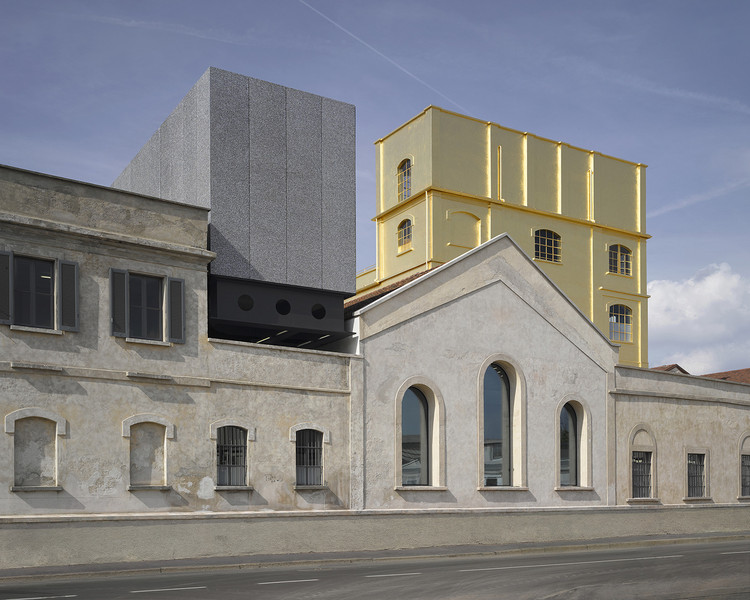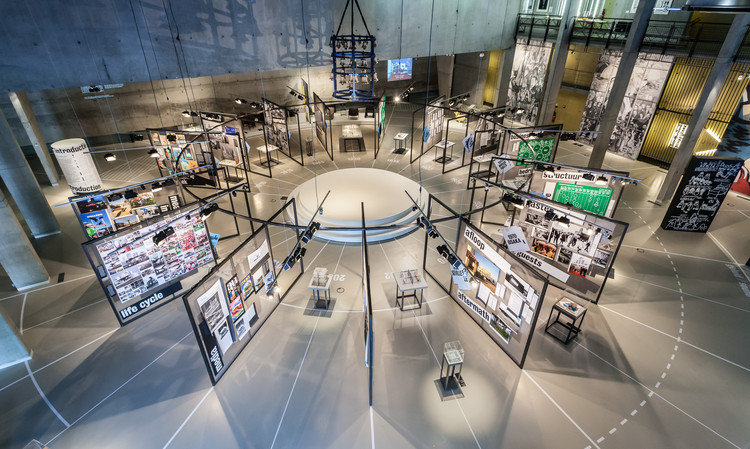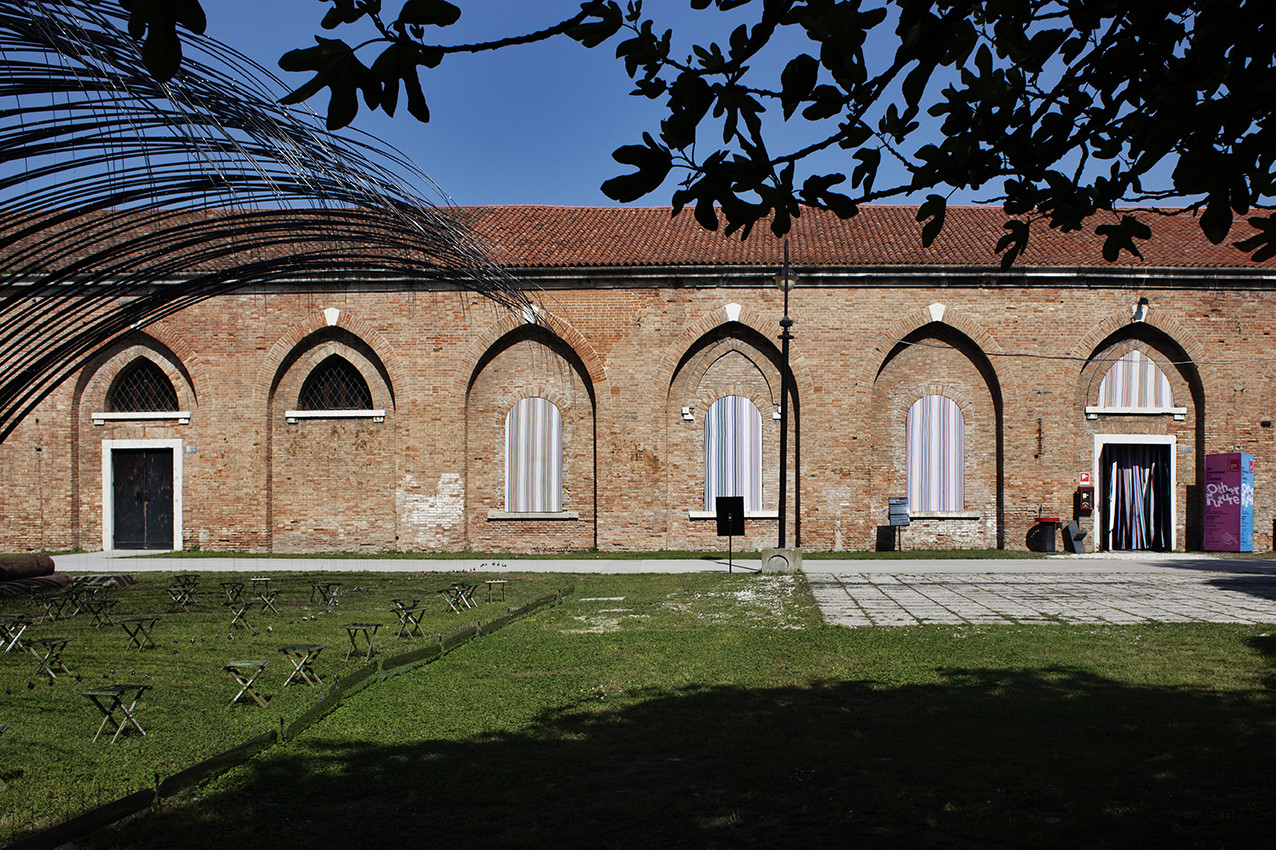"I think it is much better to say," explains Rem Koolhaas, "that we are challenged by people's needs." The closing line of this short teaser released by the filmmaker and son of Rem, Tomas Koolhaas, sums up perfectly why "REM" is one of the most highly anticipated architecture documentaries of recent years. Now three years in the making, Tomas Koolhaas' film will examine his father's incomparable oeuvre of work through the eyes of the people that inhabit the designs, eschewing the high-brow and sometimes impenetrable discourse that usually surrounds the work of OMA for something more elemental.
OMA: The Latest Architecture and News
Tomas Koolhaas Unveils Pre-Release Teaser for "REM"
Gallery: OMA's Garage Museum of Contemporary Art Photographed by Laurian Ghinitoiu
.jpg?1444180136&format=webp&width=640&height=580)
Photographer Laurian Ghinitoiu has shared with us images of OMA's recently completed Garage Museum of Contemporary Art in Moscow. The museum project repurposed the 1960s Vremena Goda restaurant in Gorky Central Park and transformed it into a modern exhibition space adorned with Soviet era tiles, mosaics and bricks preserved from its previous life.
"The building offers a wide range of interior conditions for the exhibition of art beyond the ubiquitous “white cube,” described OMA in the project's description. Scroll down for more images of the museum by Ghinitoiu.
OMA to Redesign Washington DC's RFK Stadium Campus

OMA has been selected to redevelop Washington DC's Robert F. Kennedy (RFK) Stadium campus. Lauded by the commissioners for their ability to activate public space, especially along waterfronts, OMA was also recently chosen alongside OLIN to design the city's 11th Street Bridge Park.
“One of the things we realized as we were analyzing the future use of RFK, after talking to a lot of potential users, is that there was no conceptual master plan that can be shared with the community once the ideas are put to paper,” said Max Brown, chairman Events DC - the organization spearheading the project. “We needed someone to help tell a story about what this place could be and options for use and how they’re located.”
Alternative Realities: 7 Radical Buildings That Could-Have-Been

In It’s A Wonderful Life the film’s protagonist George Bailey, facing a crisis of faith, is visited by his guardian angel, and shown an alternate reality where he doesn’t exist. The experience gives meaning to George’s life, showing him his own importance to others. With the increasing scale of design competitions these days, architectural “could-have-beens” are piling up in record numbers, and just as George Bailey's sense of self was restored by seeing his alternate reality, hypothesizing about alternative outcomes in architecture is a chance to reflect on our current architectural moment.
Today marks the one-year-anniversary of the opening of Phase 3 of the High Line. While New Yorkers and urbanists the world over have lauded the success of this industrial-utility-turned-urban-oasis, the park and the slew of other urban improvements it has inspired almost happened very differently. Although we have come to know and love the High Line of Diller Scofidio + Renfro and James Corner Field Operations, in the original ideas competition four finalists were chosen and the alternatives show stark contrasts in how things might have shaped up.
On this key date for one of the most crucial designs of this generation, we decided to look back at some of the most important competitions of the last century to see how things might have been different.
Elia Zenghelis and Steven Holl Share Lessons Learned from a Life in Architecture
In the latest video on architecture and urbanism from 32BNY, Steven Holl and his associate Dimitra Tsachrelia sit down with Elia Zenghelis, a founding partner at OMA and former lecturer at the Architectural Association in London. After forty-five years in architecture, Zenghelis has come to a series of conclusions, including a long-standing belief that men obstruct the design potential of their female colleagues, creating an imbalance in the professional landscape. "Women are much better architects than men," proclaims Zenghelis, former professor to Steven Holl, Rem Koolhaas and Zaha Hadid (as well as a former collaborator of the latter two). Sitting in Holl's New York office, Zenghelis argues that women have a certain intuition that proves essential to the creation of great design. "It's men that dominate the scene - something has to happen," he says.
Read on for more on the contents of the video.
OMA Launches New Website
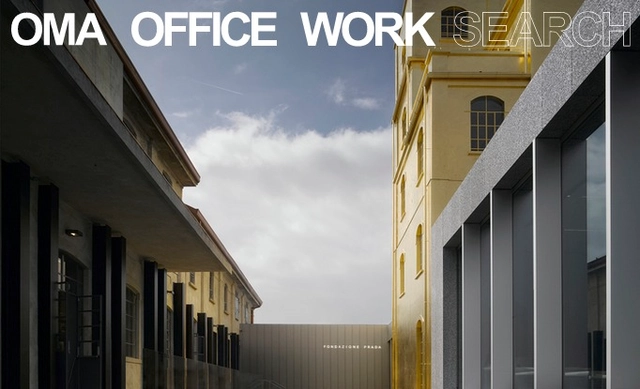
The Office for Metropolitan Architecture (OMA) has launched a new website in an effort to make their work more accessible. A collaboration with Oslo-based Bengler and NODE, oma.eu "functions as an omnivorous sensor," says OMA, that "redefines the office’s digital presence and offers a tool for many different users." Check it out for yourself, here.
Gallery: OMA's Fondazione Prada Photographed by Laurian Ghinitoiu
.jpg?1441049385&format=webp&width=640&height=580)
In May, OMA celebrated the opening of Fondazione Prada. Set out to “expand the repertoire of spatial typologies in which art can be exhibited and shared with the public,” the project resulted in an “unusually diverse environment” staged within a historic 20th-century distillery south of Milan’s city center that goes beyond the traditional white museum box.
A+U 540: OMA – Recent Works

From the publisher. September 2015 issue of a+u is focused on OMA, architectural office led by Rem Koolhaas. Featuring 14 recent works, including 7 in-progress works.
In recent years, increasing number of projects that OMA takes on involve preservation or renovation of historic architecture. Fondazione Prada and Garage Museum of Contemporary Art, both completed this year, convert modern heritage into museums where the visitors experience spatial diversity brought about by the harmony and friction of old and new.
Examining OMA's Two Latest Venues for Contemporary Art

In an article for DesignCurial, Shumi Bose visits OMA's new galleries in Milan and Moscow: the Fondazione Prada and the Garage Museum of Contemporary Art. Noting that "the mythologies [between OMA and Miuccia Prada] have become inextricably intertwined" over recent years, "the purpose of [the Fondazione Prada] was to produce a range of spaces for the creation, display of and engagement with art; what results is the built realisation of a particular ethos, affording the protean OMA a return to form. And it was always going to be stylish." Bose's flowing description of the building and its spaces, which she ultimately praises as "a place which will bear return," leads into an equally compelling description of Garage for which she recognises its clear "contribution [...] in supporting, indeed composing, the very narrative of Russian contemporary art."
Rem Koolhaas on Prada, Preservation, Art and Architecture
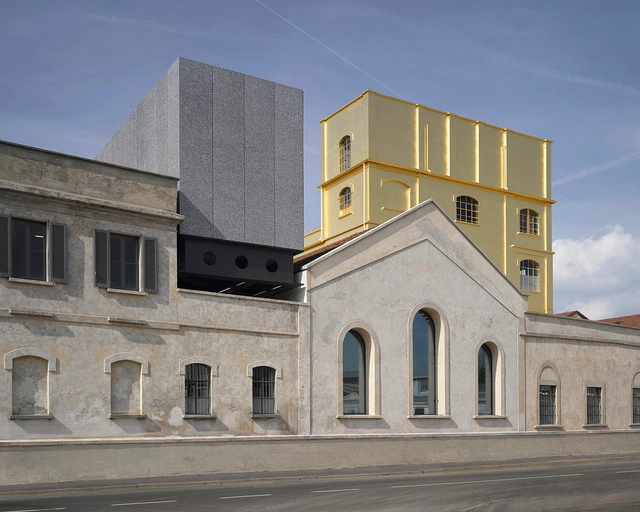
With the opening of the Fondazione Prada art galleries in May, OMA showed a different side to their practice, one focusing on preservation and assemblage rather than the iconography and diagrammatic layout that many associate with the firm. In this interview, originally published by Metropolis Magazine as "Koolhaas Talks Prada," Rem Koolhaas explains the reasoning behind this new approach, and how they attempted to avoid falling into the clichés of post-industrial art spaces.
When the Fondazione Prada opened its doors to a new permanent home in Milan dedicated to contemporary culture, it not only placed the Italian city firmly at the forefront of today’s global art world, but also introduced an ambitious new way of thinking about the relationship between architecture and art. The location—an original 1910 distillery in a distinctly gritty part of the city—comprised seven spaces including warehouses and three enormous brewing cisterns with a raw industrial quality that the architects, Dutch firm OMA, retained while adding three new buildings made of glass, white concrete, and aluminum foam. One, the centrally located Podium, is intended for temporary shows, while another—still under construction—is a nine-story tower that will house the foundation’s archives, art installations, and a restaurant. The third, a theater with a mirrored facade, features folding walls that allow the building to open onto a courtyard. In total, the collection of buildings provides nearly 120,000 square feet of exhibition space, more than twice that of the new Whitney Museum of American Art. Metropolis correspondent Catherine Shaw visited the site with Pritzker Prize–winning architect Rem Koolhaas to find out more about the challenges of creating a new cultural paradigm.
Ingrid Böck's "Six Canonical Projects by Rem Koolhaas" Dissects the Ideas that have Made Koolhaas' Career

First published in May, Six Canonical Projects by Rem Koolhaas by Ingrid Böck reveals the logic behind Koolhaas’ projects and the ideas and themes running through his career. Incredibly thorough in her analysis, Böck aims to correct what she views as an absence of complete studies on an architect who has had an enormous influence on the theory and practice of architecture. Böck presents these six projects, which include Koolhaas’ thesis project “Exodus, or the Voluntary Prisoners of Architecture,” Ville Nouvelle Melun-Sénart, Maison Bordeaux, the Dutch Embassy in Berlin, the Seattle Central Library, and the CCTV Headquarters, because they most directly explore six concepts prominent throughout Koolhaas’ work: Wall, Void, Montage, Trajectory, Infrastructure, and Shape.
OMA Selected to Design Sport and Sciences Building for Brighton College

OMA has been selected to design a new building for Brighton College that will host its sport and science departments. Their design combines the two departments into one linear building that runs along the edge of the playing field.
The sport facilities are housed on the same level as the field, while the science department stretches over the top “like a skeletal bridge.” Views between the two departments are offered on the inside creating “lively and animated circulation throughout the new building.” The façade is inspired by the terrace housing that runs opposite the building.
'What is The Netherlands?' Exploring the World Expo at Rotterdam's Nieuwe Instituut
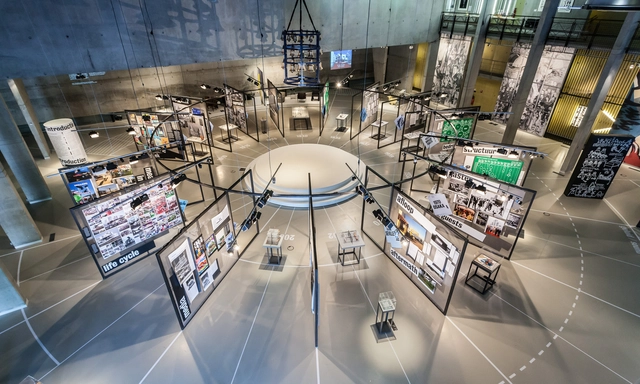
Now at the halfway point of the six month long World Expo in Milan, in which 145 countries are participating in a concentration of national spectacle surrounding the theme of "feeding the planet," Rotterdam's Nieuwe Instituut (HNI)—the centre for architecture in the Netherlands—is exhibiting an altogether more reflective display of national civic pride.
Rotterdam, which was blitzed and decimated during the Second World War, is a place well suited to host an exhibition whose underlying theme centres on the fragile, often precarious notion of national self-image. Following the war Rotterdam was forced to rebuild itself, carving out a new place on the world stage and reestablishing its importance as an international port. Now, seventy years later, Rotterdam is a very different place. In demonstrating just how delicate the construction of a tangible national identity can be this latest exhibition at the HNI offers up a sincere speculative base for self-reflection.
AMO Designs Paris Pop-Up Club

On Saturday, July 4, designer Prada and AMO—a research studio subset of OMA architecture—hosted The Miu Miu Club, a pop-up event, featuring dinner, a fashion show, and several musical performances in Paris, France.
Inside of the 1937 art deco Palais d-Iena, Paris’ current CESE government offices, the one-night event was held in the Hypostyle, using a scaffolding ring to create a “room within a room.” Strip lighting, metal grids, PVC sheets, and arrangements of luxurious furniture were also used to enhance the space.
Critical Round Up: OMA's Garage Museum of Contemporary Art

Founded in 2008 and named after the constructivist bus shelter that was its first, temporary home, the Garage Museum of Contemporary Art is Russia's first private, non-profit art foundation. Relocating from a semi-industrial neighborhood on the northern edge of Moscow to Gorky Park, the Garage Museum's conversion of a Soviet era canteen and social club into Museum of Contemporary Art by OMA has so far been overshadowed by its more glamorous OMA counterpart which opened last month, the Milanese distillery conversion for Prada. Nevertheless, since opening last Friday the Garage Museum has attracted attention for Rem Koolhaas' shift towards preservation, something that has startled the critics. Find out more about what they thought after the break.
Foster, Nouvel and Koolhaas Compete to Design Perth's WA Museum

Norman Foster, Jean Nouvel and Rem Koolhaas are competing to design the new Western Australian Museum (WA Museum) in the Perth Cultural Center. As The West Australian reports, the leading architects are part of three shortlisted consortiums being considered to develop the new $428 million project. Each team is currently working with the government on their proposals. A team is expected to be announced later this year. The museum is slated to open in 2020.
The complete list of the shortlisted teams include...
OMA Among 5 Shortlisted for Singapore Rail Corridor

MVRDV, OMA and DP Architects are among five shortlisted teams competing to design the Singapore Rail Corridor. Spanning the island south to north, from the Tanjong Pagar Railway Station to the Woodlands Checkpoint, the corridor is the site of Singapore’s previous rail link to Malaysia. With this competition, the Singapore government hopes to develop a feasible plan to transform the 24 kilometer stretch into a public greenway that connects four important urban nodes: Buona Vista, the Bukit Timah Railway Station area, the former Bukit Timah Fire Station, and Kranji.
“The expanse of the corridor running through the centre of the entire country presents an unprecedented opportunity to develop a new typology of landscape with transformative effects for the country as a whole. This is a project that has the potential to improve quality of life for generations to come," says OMA Partner Michael Kokora.
64 teams responded to the government's call for ideas, and now only five have been selected to move onto the competition's second stage. These five teams are...
Images Released of OMA-Designed Chinese Pavilion at 2015 Venice Art Biennale

Completed images of OMA's design for the 2015 Venice Art Biennale's Chinese Pavilion have been released. Juxtaposing artworks "in a field of projections and stages," the exhibition is designed to be an "immersive environment" that brings together work by Tan Dun, Liu Jiakun, Lu Yang, Wu Wenguang / Caochangdi Work Station and Wen Hui / Living Dance Studio under the theme "Other Future."


.jpg?1444182984)
.jpg?1444181210)
.jpg?1444182886)
.jpg?1444181258)
.jpg?1444180136)




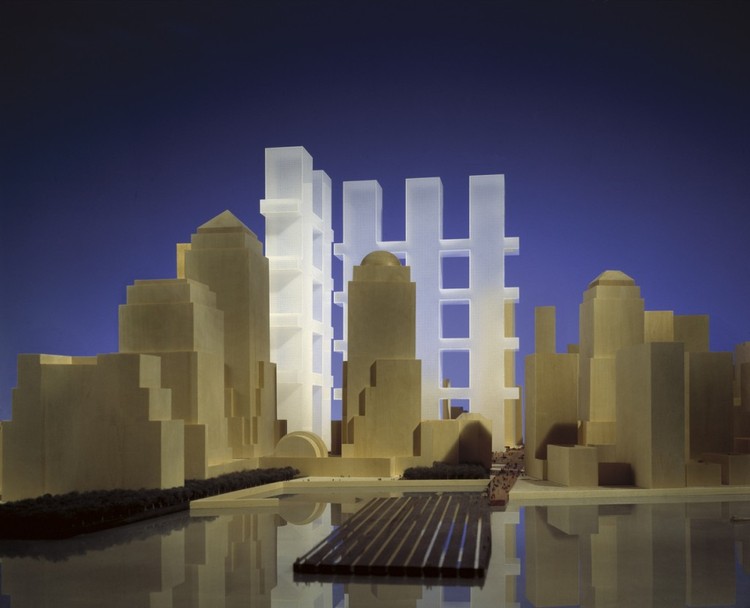
.jpg?1441049458)
.jpg?1441049469)
.jpg?1441049908)
.jpg?1441050301)
.jpg?1441049385)


.jpg?1438347714)
.jpg?1438347662)

